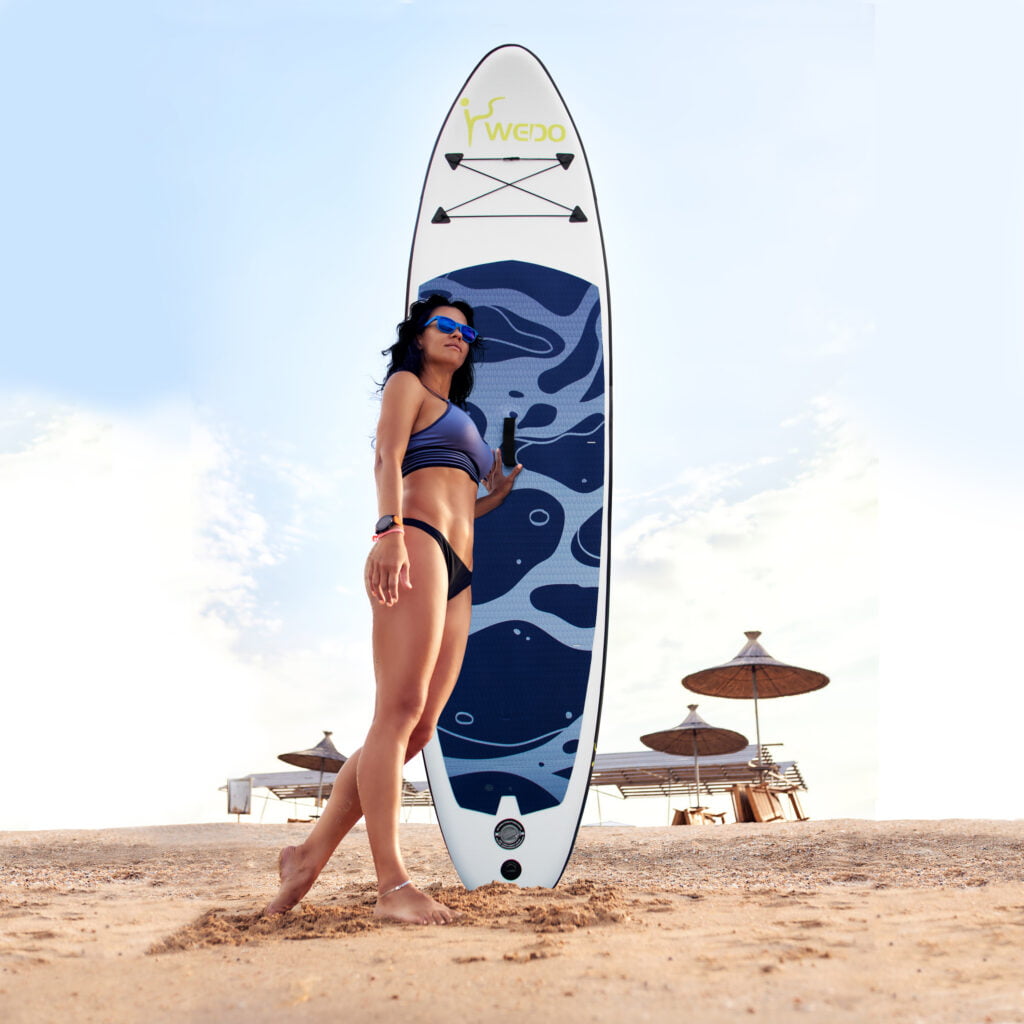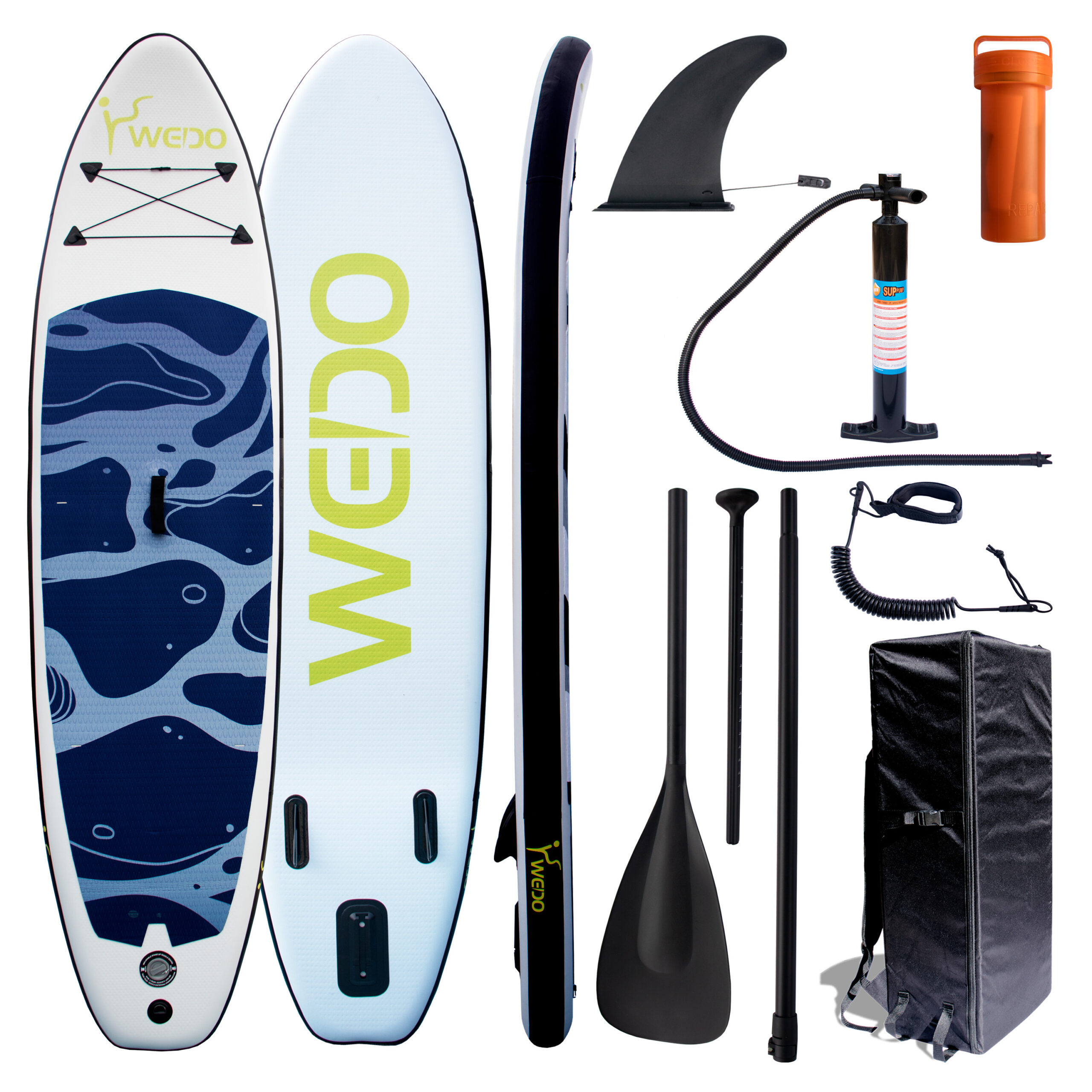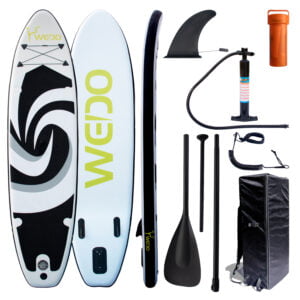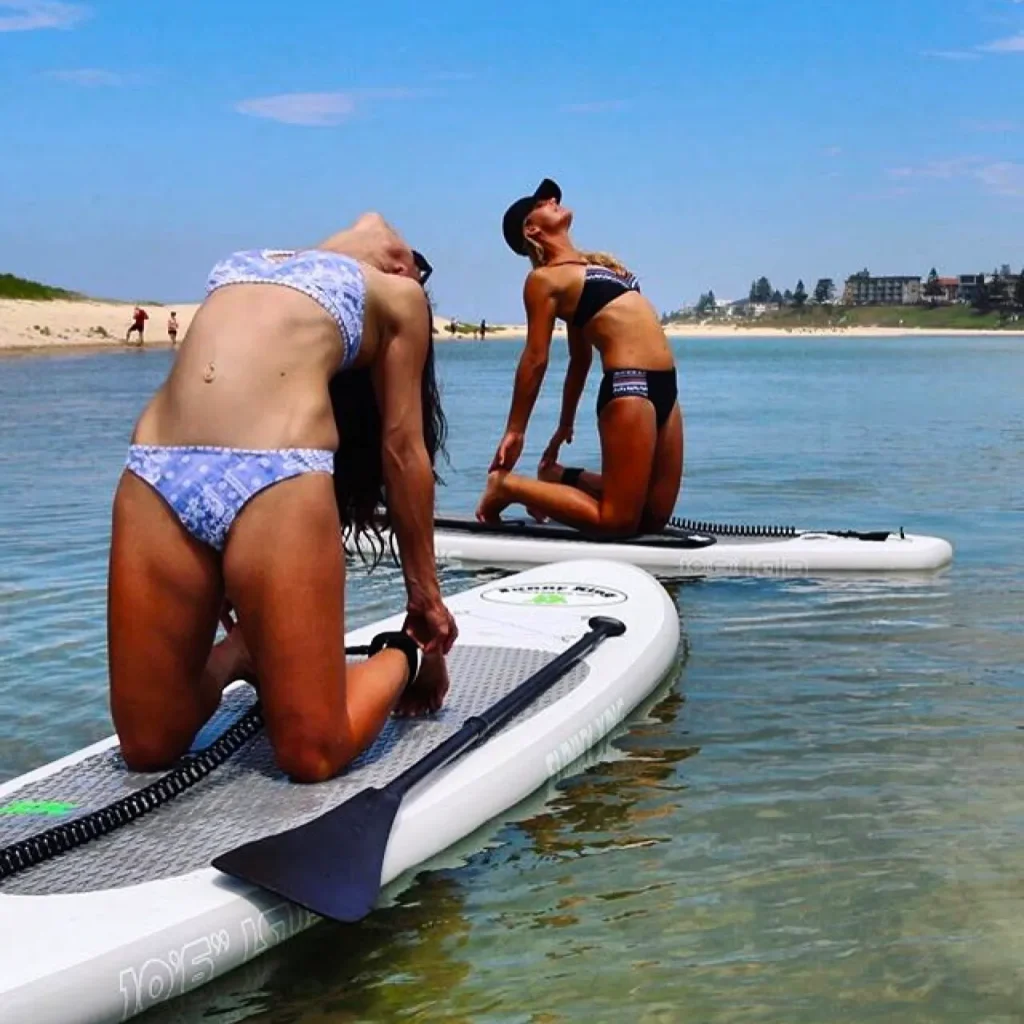With the growing popularity of paddle surfing, choosing the right board becomes crucial to get the most out of this exciting water activity. In this article, we will explore the key factors to consider when selecting your paddle surf board.
Types of Tables:
All-around:
- Perfect for beginners.
- Stability and versatility.
All-around boards are considered ideal for beginners for several reasons:
- Stability:
- All-around boards are known for their wide and stable platform. This provides beginners with a solid base for balance, which is crucial while learning to paddle and stand up on the board.
- Versatility:
- These boards are designed to perform well in a variety of water conditions, from calm water to gentle waves. Their versatile design allows beginners to experience different aspects of paddle surfing without having to constantly change boards.
- Ease of Use:
- All-around boards are often easier to paddle due to their shape and contour. This makes it easier for beginners to progress through the water with less effort, which is beneficial when learning basic techniques.
- Manoeuvrability Moderate:
- Although not as agile as boards designed specifically for surfing, All-around boards offer a good combination of stability and manoeuvrability. This allows beginners to progress gradually as they develop their paddle surfing skills.
- Adaptability to Different Ability Levels:
- As beginners improve their skills, All-around boards can still be used for a variety of activities, such as short rides or small wave surfing. This means that the investment in an all-around board can be long-lasting as users advance in their level of experience.
- Adequate Flotation:
- Most All-around boards offer good buoyancy, which is beneficial for beginners who are learning to stand up and balance on the board.
Surfing:
Designed for those looking to perform manoeuvres and surf waves.
Less stable than all-around, but more agile.
Touring:
For long journeys.
Increased speed and efficiency in the water.
Paddle surf boards Inflatables :
Inflatable stand-up paddleboards (ISUPs) are also an excellent choice for beginners, and have specific advantages that make them attractive to those just starting out in the world of paddle surfing. Here are some reasons why inflatable boards are recommended for beginners:
- Stability:
- Like rigid all-around boards, inflatable boards offer good stability. The inflatable construction technology provides a firmer surface than some might expect, making it easier for beginners to keep their balance.
- Portability and Storage:
- One of the biggest advantages of inflatable boards is their portability. They can be deflated and rolled up into a compact backpack, making them easy to transport and store. This is especially beneficial for those who do not have a large storage space or who need to take their board to different locations.
- Durability:
- Inflatable boards are constructed of durable materials, such as heavy-duty PVC. This makes them less prone to damage from bumps or impacts, which can be useful for beginners who are learning and may experience occasional falls.
- Comfort:
- The surface of inflatable boards generally has a smooth texture, which makes them comfortable to stand up and move around on. This is especially beneficial for beginners who are still perfecting their technique and may spend extended periods of time on the board.
- Adaptability:
- Inflatable boards are versatile and can be adapted to a variety of water conditions and skill levels. Some models are designed specifically for beginners, with features that improve stability and make learning easier.
- Affordable Price:
- In general, inflatable boards tend to be more affordable than rigid boards. This can be an important consideration for those who are trying paddle surfing for the first time and are unsure of their level of long-term commitment.
Inflatable boards offer a combination of stability, portability and durability that makes them ideal for beginners. Their ease of transport and storage, along with their versatility in different water conditions, make them a popular choice for those taking their first steps into the world of paddle surfing.

Common Sizes:
- Length:
- Short (less than 10 feet): More manoeuvrable and suitable for rough water or surfing activities.
- Medium (10 to 12 feet): A good balance between manoeuvrability and speed, suitable for a variety of activities.
- Long (over 12 feet): Increased speed and efficiency on the water, ideal for long distance paddling and touring.
- Width:
- Wide (over 32 inches): They offer more stability, ideal for beginners and recreational activities.
- Intermediate (30-32 inches): A good balance between stability and performance, suitable for a variety of abilities.
- Narrow (less than 30 inches): Increased speed and agility, ideal for more advanced users and surfing activities.
- Thickness:
- 4 inches or less: They offer a slimmer profile and are ideal for advanced users looking for performance.
- 5 inches: An intermediate option that balances performance and stability.
- 6 inches or more: They provide increased buoyancy and stability, ideal for beginners and recreational activities.
Common Materials:
- PVC (Polyvinyl Chloride):
- Main material used in the construction of inflatable boards.
- It offers durability and abrasion resistance.
- High quality PVC coatings are essential for a durable board.
- Drop-Stitch:
- Key technology in inflatable boards that allows them to maintain their shape and rigidity.
- It consists of thousands of threads connecting the top and bottom layers of the board.
- Improves structural rigidity when the board is inflated.
- Top layer (Deck Pad):
- They are usually made of EVA (Ethylene Vinyl Acetate).
- Provides traction and comfort for the user.
- Some boards have raised areas on the pad for improved feel and grip.
- Reinforcements and Rails:
- Some boards include additional reinforcements in areas prone to wear.
- Reinforced rails for improved strength and durability.
- Valves:
- Inflatable boards usually have an inflation/deflation valve.
- High quality valves facilitate fast inflation and a tight seal.
When choosing an inflatable paddle surfboard, it is essential to consider your skill level, type of activity you plan to do and personal preferences. The quality of the materials and construction will impact the durability and performance of the board over time.
Accessories
Accessories are an integral part of the inflatable stand up paddle surfing (ISUP) experience and contribute to comfort, safety and overall performance in the water. Here are some common accessories that usually come with inflatable paddle surfboards:
1. Rowing:
- The paddle is essential to propel you through the water.
- Paddle surf paddles are usually adjustable in length, allowing you to adapt them to different heights and preferences.
2. Leash (safety line):
- A leash is a strap that connects the board to your ankle.
- They prevent the board from moving too far away in the event of a fall, facilitating recovery.
- Important for your safety, especially in rough water conditions.
3. Inflation pump:
- Necessary to inflate the board before use.
- The pumps are usually double-acting, inflating the board by both pushing and pulling, making the process faster.
4. Transport bag:
- A durable bag for transporting the board, pump and other accessories.
- Designed for easy storage and transport, especially important since inflatable boards are known for their portability.
5. Repair Kit:
- Includes patches and glue to repair small punctures or damage to the board.
- An essential accessory to keep your board in top condition.
6. Keel (Fin):
- Some inflatable boards have removable fins that improve stability and tracking (directionality).
- They can be fixed or removable, depending on the model.
7. Carrying strap:
- Some carrying bags come with adjustable straps to carry the board more comfortably over the shoulder.
8. Deck Pad Anti-Slip:
- The deck pad provides traction and comfort for your feet while standing on the board.
- Some boards have thicker or textured pads for an extra grippy feel.
9. D-rings and Bungee Cords:
- Some boards have D-rings to attach additional objects or accessories.
- Bungee cords or bungee cords on the deck are useful for securing personal items, such as a water bottle or dry bag.
10. Carrying handle:
- A solid, comfortable handle in the centre of the board makes it easy to carry when inflated.
11. Replacement Air Valve:
- In case the main valve fails, some boards include a replacement air valve.
These accessories not only enhance your paddle surfing experience, but also contribute to the safety and care of your equipment. Before buying an inflatable board, it is advisable to check what accessories are included and consider whether you need to purchase any additional items according to your specific needs and preferences.




